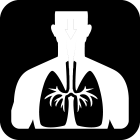 Likely to cause
Likely to cause
 Can cause
Can cause
 May cause
May cause
Chlorine dioxide
CAS: 10049-04-4
How can this chemical affect my health?
Acute (Short Term) Effects

Toxic to Humans & Animals – Toxicity or fatality on contact, ingestion or inhalation to humans and other mammals.

Skin Irritation – Irritation or serious damage to the skin.

Eye Irritation – Irritation or serious damage to the eyes.
Chronic (Long Term) Effects

Endocrine Disruption – Interference with the endocrine system, which plays a crucial role in metabolism, development, growth, reproduction and behavior.

Reproductive Harm – Disruption of the male or female reproductive systems, changing sexual development, behavior or functions, decreasing fertility, or resulting in loss of the fetus during pregnancy.

Other Health Effects – Can cause serious damage on contact or ingestion.

Birth Defects – Harm to the developing child including birth defects, low birth weight and biological or behavioral problems that appear as the child grows.
Inherent Hazards

Reactive – May spontaneously ignite or explode on its own or in contact with water.

Restricted List – This chemical is on a list from an authoritative body recommending that its use be avoided.
How does this chemical impact the environment?

Acute Harm to Aquatic Ecosystems – Biological harm or possible death to fish or other aquatic organisms following a single exposure.

Chronic Harm to Aquatic Ecosystems – Irreversible harm to fish or other aquatic organisms following long term exposure.

Harm to Land Ecosystems – Harm to land based plants, animals or microorganisms.
What safer alternatives are available for this chemical?
Information on safer alternatives is currently fairly limited, and not easily accessible or linked to information on chemicals in the workplace. Where we have information on safer alternatives, ChemHAT will display links to existing case studies of safer alternatives for the chemical.
How am I likely to be exposed to this chemical?

Ingestion

Skin contact

Inhalation
How can I protect myself from exposure to this chemical in the workplace?

Handle with gloves

Protective clothing

Respirator